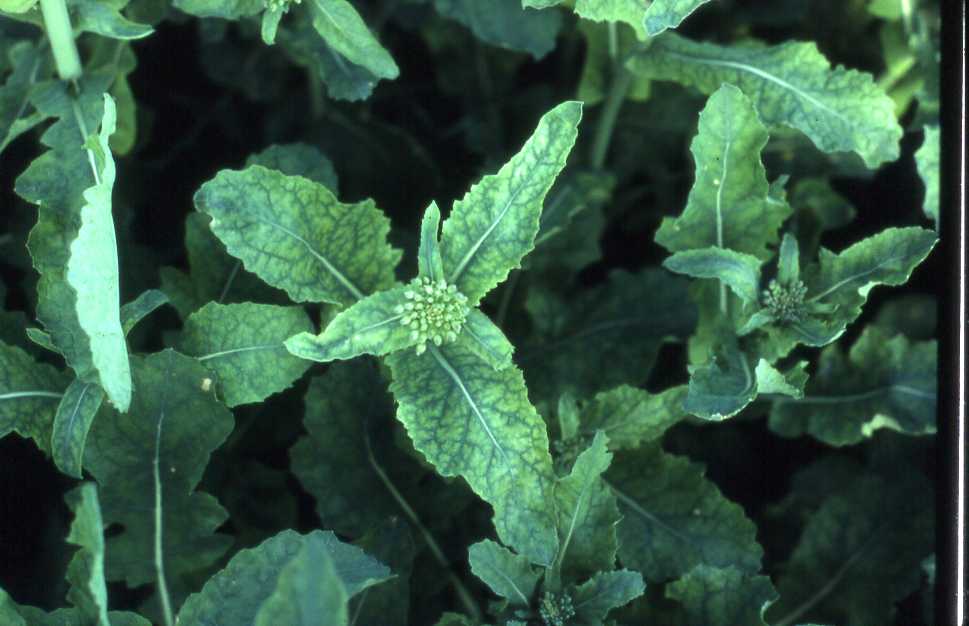Best Use of Limited Supplies: Sulphur
Sulphur (S)
- The risk of S deficiencies in crops is increasing as atmospheric S sources decline.
- In situations where S levels might be low, for example on light soils, following wet winters, where there has been no previous history of manure use or S-containing fertilisers, use of sulphate-containing fertilisers should be considered at, or soon after, sowing or planting.
- If S deficiency is suspected, plant tissue tests can be used to make a diagnosis.
- S crop requirement and S in fertilisers are expressed as kg SO3 /ha and %SO3
- Recommendations take account of S planning in the PLANET Scotland software tool.

Symptoms of Sulphur deficiency in oilseed rape
- Recent research has quantified S supply from livestock manures and biosolids.
- Many vegetable crops, especially brassicas, have a significant requirement for sulphur.
- Where S deficiency has been recognised or is expected, apply 75 kg SO3/ha for winter oilseed rape and vegetable brassica crops (e.g. Brussels sprouts, cabbage, cauliflower and calabrese); 40 kg SO3/ha for cereals and spring oilseed rape; and 25 kg SO3/ha for potatoes and peas and all other crops.
See also our FAS Technical Note (TN685) 2017: Sulphur recommendations for crops
Dr Alex H Sinclair for the Farm Advisory Service
Sign up to the FAS newsletter
Receive updates on news, events and publications from Scotland’s Farm Advisory Service
